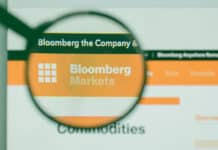
Elizabeth Moran interviews Hui Sien Koay, Head of iShares Fixed Income Product Strategy, APAC ex-Japan, BlackRock, and James Waterworth, Director, Wealth Distribution Australia, BlackRock, on how investors are currently thinking about fixed income within a strategic asset allocation or total portfolio level.
Key take-aways:
- Current interest rates, won’t go back to historical lows
- Fed is likely to make three cuts to the Fed funds rate by year end and a third of the cuts are already priced in
- While there are some tight spreads, as companies are doing well, all in yield matters and investors can achieve circa 5%pa
- Institutional investors have been stepping out of cash and into short dated fixed income exposures
- Investors are taking a barbell approach to markets at the moment, with 50% short dated and 50% long dated fixed, so adding duration to their portfolios
- Blackrock’s theme for 2024 is ‘No Time To Yield’, attractive deposit rates will fall dramatically as the market prices in rate cuts, to avoid losing income, investors should shift into investment grade bonds, including government and corporate bonds
Snippets from the interview
Elizabeth Moran:
So perhaps if you could just run us through some of your thoughts at the moment regarding interest rates in relation to Australia and the rest of the world?
Hui Sien Koay:
The last time government bond yields, were at four point something percent was 14 years ago for Australia or 20 years ago for the US.
I think that’s what’s changed. What’s also changed is that it’s our view that interest rates won’t go back to those historical lows anytime soon. It’s a higher for longer regime, because of supply constraints globally, because of the new world post-COVID we’re in, and the turbocharging of certain mega forces like AI, means higher yields and inflation are going to be the new norm. So, what do you do with that information?
For the past five years in Australia, longer in the US, people ran for the hills in cash and that was totally fine.
If you just look at bond funds and money market funds, the global values are on par. It’s never really been the case ever, in terms of assets under management. That’s pretty striking. That tells you there’s just a mountain of assets that have gone to cash and are not invested. In Australia, cash is at an all-time high. Fixed income investment has never been that 60-40, 60% equities, 40% bond portfolios.
No one did that by and large in the US over the past 20 years for good reason, that number is probably around, 20% today. In Australia it’s a lot lower. We’re talking single-digit percentage, especially if investments are the self-managed investments that people have more control over.
Also read: Australian ETF Market Breaks $200billion Record
There was nothing wrong, with being in cash, but the music’s going to stop quite soon if not already in the US, because Powell said the coast is clear to cut rates. The bond markets, and the money market funds have already reacted. I would say we’re already halfway priced in.
So, if you did want those kind of lofty returns for a longer time period, you need to move now or yesterday. And the place with the highest certainty of doing that for portfolios is obviously fixed interest.
What we are seeing is ETFs changing the game, because you can do a lot more with ETFs. You are no longer stuck with the option of just calling up your banker and hoping for an allocation when someone raises debt, you’ve got evergreen, always available solutions.
You’ve got basically a lot more precision.
Our best-selling fund globally is something very simple. It’s the ultra-long, 20 year plus US Treasury Bond ETF, because that’s a very capital efficient way to invest. You buy a dollar of it, you get 20 years worth of maturity, that is, close to 20 years dollars duration. You put 10% of that ETF in your portfolio, so you get two years of duration. That’s a lot of duration for some people.
Elizabeth Moran:
That’s the fund you’ve just launched in Australia now, isn’t it?
Hui Sien Koay:
We’ve just launched its equivalent in Australia and it will list early September. The fund is already a US$65 billion US behemoth.
Elizabeth Moran:
It’s exciting that you’ve decided to launch here and extend our market. Can you talk to me a little bit about where you see neutral rates in the US and Australia and if you think that’s going to impact how people view fixed income? Because at the moment of course the impetus is for people to invest to get price rises as rates are cut. But you’re saying it’s already half-priced in?
Hui Sien Koay:
The closest thing we have to a house view is that interest rates are definitely going to be higher for longer. We’re not going back to the days where US Treasuries only paid you 50 basis points. Neither is Australia. We do have capital markets assumptions that are telling us whether or not you’re buying US government bonds or Australian government bonds, in a 10-year horizon, that capital markets assumptions are positive and safely in a positive range of outcomes.
The range of outcomes, is wide from 2 – 4% but what’s important here, is managing the short term, but investing for the long term.
What we do expect is a ton more volatility that rates markets aren’t necessarily used to.
Our fixed income desk is indeed of the view that Australia’s 4.35% cash rate is not really going anywhere anytime soon, not this side of the year end. We could be wrong, but that’s the view.
Elizabeth Moran:
In terms of the domestic market, you would’ve seen, we’ve got quite a lot of recent corporate issuance, it’s all oversubscribed. The price guidance is settling at the lower end of the range. Obviously huge demand for corporate bonds and the spreads have contracted quite a lot. At what point do you think, corporate bonds are still attractive? We’ve been talking about government bonds, but how do you feel about investment grade corporate bonds?
Hui Sien Koay:
You are right that spreads are tight. A lot of people are moaning about that. This isn’t just Australia either. I think on a global basis you’re looking at less than a 100 basis points for high quality paper. That’s tight. But what really matters? We think, well two things. Tight spreads are not necessarily a definite harbinger of spread widening.
Tight spreads may mean the companies are doing well. These are high quality companies anyway. They’re target rating investment grade, they are paying you that 100 basis points, which is your healthy carry.
Also read: Why The Yield Curve May Not Have Worked As A Recession Indicator This Time Around
The second thing that matters is the all-in yield, because the all-in yield is 5% in investment grade today. The natural all-in yield, that’s attractive. And credit’s always the sweet spot where you are insulated, not as much as in government bonds, but to a large extent, should there be a sell-off. But should there be Goldilocks scenario, you are rewarded way beyond just holding rates. So, we do like credit.
Elizabeth Moran:
What are you witnessing in the Australian market right now?
Jimmy Waterworth:
We find Australian investors are reaching for yield.
So, we are seeing people stepping into short-dated exposures, typically investment grade corporates to receive a higher yield than they would if they were rolling a term deposit. Alternatively, as Sien mentioned, for those that are looking for a bit more ballast in their portfolios, that’s where we see them adding duration.
Elizabeth Moran:
Look, it’s certainly great, the diversity and range of ETFs investors really can build a portfolio just using ETFs. Can I just ask in terms of Australian funds under management, what’s the split between your ETFs? How much is in short-dated cash like funds compared to government bonds and investment grade? If you were to draw me a pie chart, what would it look like?
Jimmy Waterworth:
Where we see most Australian investors use fixed income ETFs is within the core of their portfolio. So, this is in ETFs tracking commonly used benchmarks, and then we see that as Sien mentioned, there’s precision around the edges to that. In August, two of the top five ETFs have been fixed income exposures. So, we do see that playing out in this market currently.
Approximately 64 million dollars has gone into our Australian composite product. We have an investment grade aggregate strategy, which received inflows of $20 million, so they’re not dissimilar, whereas the two cash strategies combined is around $40 million. So current capital deployments are going more to that core bucket versus the cash, but it’s certainly there as well as short duration.
People are re-engaging with fixed income after a period of low cash rates and we’ve had a big spike in recent years.
Bonds are very much back. They are playing that traditional role within a portfolio – diversification away from equities, as well as income and capital preservation. Through COVID, and before when we had that very low interest rate environment, it was a time where active managers were able to offer investors differentiated strategies. What we are seeing now is confidence to use exchange traded funds in this higher yielding environment. Part of that is receiving education, but also having the confidence given the market conditions, and with more choice than ever.
Elizabeth Moran:
Fantastic. Is there anything else you want to add in terms of what you’re seeing, what you’ve seen?
Hui Sien Koay:
The theme of the year, we have one every year, is ‘No Time To Yield’.
It’s a little bit of word play on James Bond, but the whole message is it’s better to be earlier than miss the boat, which the institutions totally get. The expectation is that by December the US Fed Funds rate will be 1% lower, which is why I said the market’s already priced a large part of the way there. And so yeah, better there’s some urgency and it’s our duty to just point out the obvious for the bottom market here.

































